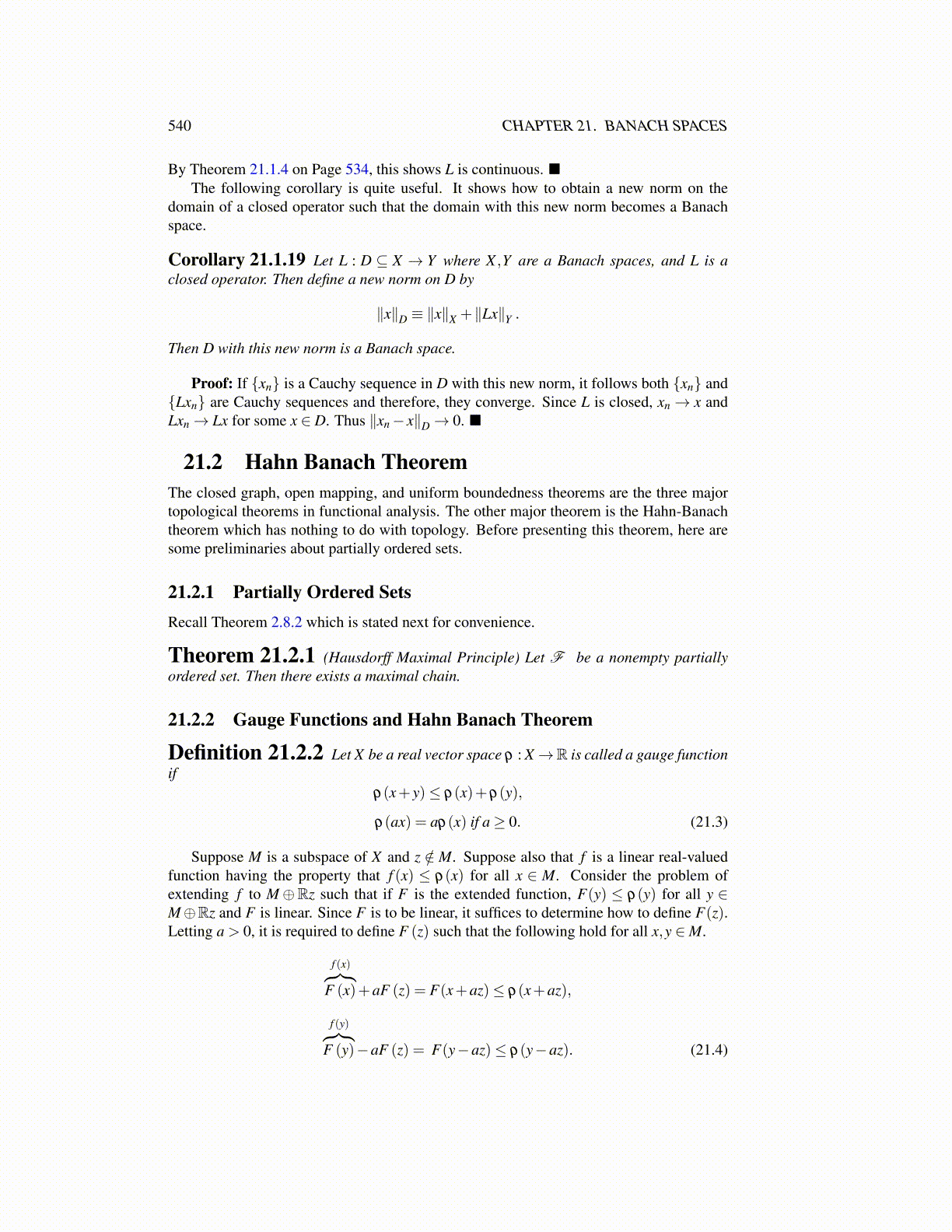
540 CHAPTER 21. BANACH SPACES
By Theorem 21.1.4 on Page 534, this shows L is continuous. ■The following corollary is quite useful. It shows how to obtain a new norm on the
domain of a closed operator such that the domain with this new norm becomes a Banachspace.
Corollary 21.1.19 Let L : D ⊆ X → Y where X ,Y are a Banach spaces, and L is aclosed operator. Then define a new norm on D by
∥x∥D ≡ ∥x∥X +∥Lx∥Y .
Then D with this new norm is a Banach space.
Proof: If {xn} is a Cauchy sequence in D with this new norm, it follows both {xn} and{Lxn} are Cauchy sequences and therefore, they converge. Since L is closed, xn → x andLxn→ Lx for some x ∈ D. Thus ∥xn− x∥D→ 0. ■
21.2 Hahn Banach TheoremThe closed graph, open mapping, and uniform boundedness theorems are the three majortopological theorems in functional analysis. The other major theorem is the Hahn-Banachtheorem which has nothing to do with topology. Before presenting this theorem, here aresome preliminaries about partially ordered sets.
21.2.1 Partially Ordered SetsRecall Theorem 2.8.2 which is stated next for convenience.
Theorem 21.2.1 (Hausdorff Maximal Principle) Let F be a nonempty partiallyordered set. Then there exists a maximal chain.
21.2.2 Gauge Functions and Hahn Banach Theorem
Definition 21.2.2 Let X be a real vector space ρ : X→R is called a gauge functionif
ρ(x+ y)≤ ρ(x)+ρ(y),
ρ(ax) = aρ(x) if a≥ 0. (21.3)
Suppose M is a subspace of X and z /∈ M. Suppose also that f is a linear real-valuedfunction having the property that f (x) ≤ ρ(x) for all x ∈ M. Consider the problem ofextending f to M⊕Rz such that if F is the extended function, F(y) ≤ ρ(y) for all y ∈M⊕Rz and F is linear. Since F is to be linear, it suffices to determine how to define F(z).Letting a > 0, it is required to define F (z) such that the following hold for all x,y ∈M.
f (x)︷︸︸︷F (x)+aF (z) = F(x+az)≤ ρ(x+az),
f (y)︷︸︸︷F (y)−aF (z) = F(y−az)≤ ρ(y−az). (21.4)